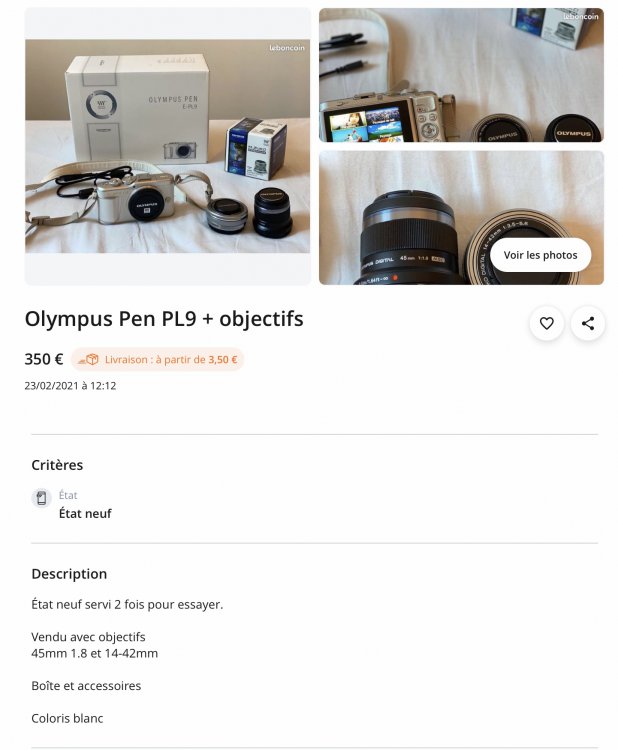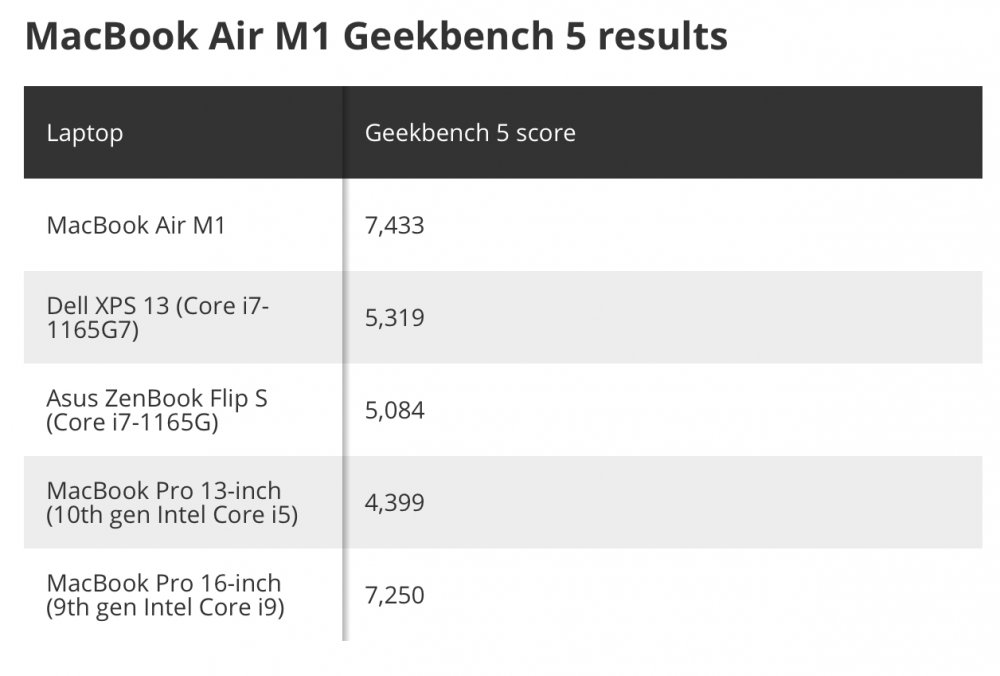-
Posts
1,438 -
Joined
-
Last visited
Content Type
Profiles
Forums
Articles
Everything posted by John Matthews
-
I've been watching some resolution insights by cinematographer Steve Yeldin that I think many might find very interesting. Not sure if this has already been posted... It would be interesting to discuss.
-

Help me on an eBay hunt for 4K under $200 - Is it possible?
John Matthews replied to Andrew - EOSHD's topic in Cameras
My suggestion would be to never buy anything new- you won't lose as much. Just be patient and wait for a good deal to come up. In the end, you'll find you'll lose little to no money on the "investment". Be the guy who gets the awsome deal, not the guy who loses all that money. Just an idea. -

Help me on an eBay hunt for 4K under $200 - Is it possible?
John Matthews replied to Andrew - EOSHD's topic in Cameras
I found a PL9 for 350 euros with a 14-42 ez pancake, and a 45 f1.8. You'll be well under 200 euros if you resell the lenses. Here's the listing: -

Help me on an eBay hunt for 4K under $200 - Is it possible?
John Matthews replied to Andrew - EOSHD's topic in Cameras
Let's just keep it going... sell your m43 stuff NOW! You don't want to lose all that money you put into your "investment". We all know that those once great images that everyone liked in the past will only be considered garbage in the future. It's all about the camera. -

Help me on an eBay hunt for 4K under $200 - Is it possible?
John Matthews replied to Andrew - EOSHD's topic in Cameras
I've had similar luck finding some good deals, but I've also seen price increases in Olympus gear recently ...no idea why. Now, Panasonic stuff is super-inexpensive. The only exception is the e-m1 ii, which is still a super-killer deal right now. I just love those guys who keep spewing "sensor size is everything". Let's keep that going for as long as possible! -

Help me on an eBay hunt for 4K under $200 - Is it possible?
John Matthews replied to Andrew - EOSHD's topic in Cameras
My Olympus PL9 was just under 200 Euros (body only). It has the same IQ as the e-m10 iii, but it doesn't have an EVF or 5-axis IBIS (it only has 3, but it's excellent). -

Help me on an eBay hunt for 4K under $200 - Is it possible?
John Matthews replied to Andrew - EOSHD's topic in Cameras
I got a gh2 for about 100 euros... not 4k, but it does have 1.86 crop. For my usage, it makes sense. I hacked it and it has an interesting look to it... different from other Panasonics I've used in the past. I still find 4k slow to edit. -

Super tiny Sigma 28-70mm F2.8 for mirrorless camera (E / L Mount)
John Matthews replied to Andrew - EOSHD's topic in Cameras
So Sigma's promoting this lens as a "family" lens? I'm sure it would do fine, but this system seems a little over-kill. I'd buy if I had an fp though. -

A7SIII - with great toneh comes great responsibility
John Matthews replied to scotchtape's topic in Cameras
Just an idea... why not use manual focus and let the person just go slightly in and out of focus? ...much less distracting than electronic pulsing. -
So, I got a little-used (9500 shutter count) GH2 today for reasonably cheap. I'm actually amazed at all the features and buttons it has. For 2010, that's great! My question is : what's best hack for it? If I'm not mistaken, Cluster-x was the most recent? I'm more inclined to use the longGOP versions (Drewnet), something that doesn't fill up my disks but offers very decent 1080p 25fps. I'd love some input! Also, I'd like to use it for live-streaming. I already have a Blackmagic Ultrasudio recorder and I'm 99% sure it's fully compatable.
-
Go to video -> Sound -> audio setting -> PCM Recorder Link -> Camera REC volume. You need to have it set to "disabled". Now there's no more hiss, but you need to have your external recorder connected to the mic input as it is now the preamp and the camera does nothing (except record the audio it receives). Took me forever to figure this out. I thought someone might be interested.
-

Apple M1 crushes Intel – benchmark results
John Matthews replied to Andrew - EOSHD's topic in Cameras
Apple's going blow everyone away in the short term. Their willingness to let go of old tech (for better or worse) and prioritize the performance/energy efficiency factor give them a serious edge. The icing on the cake is the ability to match software and hardware, fine-tuning performance for better results. -
That's brilliant!
-
Yes. A great song... just very surprised at the video.
-
The pitch: We're going to make the most epic music video ever! There are going to be torch jugglers in slow-mo while singing, a flashback in a query involving child look-alikes in bathrobes at a make-up table, motorcycles in a parking garage filled with water smoke while playing instruments, Daft-punk style helmets in front of the drum set, singing while moving on the motorcycle, and as a grand finale, a bulldozer knocking over a building and then torching it with a flamethrower. With that kind of production value, what could go wrong? Take a look:
-

Apple M1 crushes Intel – benchmark results
John Matthews replied to Andrew - EOSHD's topic in Cameras
From the sound of it, you need to throw a lot at it for that. I'll risk it on a portable device. -

Apple M1 crushes Intel – benchmark results
John Matthews replied to Andrew - EOSHD's topic in Cameras
It sounds like the Air is one to get for me... portability, a keyboard, great performance, with OSX, no stupid audio and update problems with hackintoshes, no stupid Touch Bar, seems like a no-brainer. I'm saving up now. -
All YouTube video AI chains end the same- insane, violent, bizarre, and extreme. It doesn't even matter what you start with... eventually it goes there and you have to choose which road accident to watch, or you need to be more intentional on what you let yourself watch. PS: I give this thread two days before it goes to crazy land and gets shut down.
-
I agree. I'd wait a little. This is a new model, with new internals- prudence is necessary IMO. What gives me confidence about this model is that: They're supposedly using many of the same parts as the previous one... if it ain't broken, don't fix it. A lot of the guts will be shared with the processor main unit. This can only be good in that they test this the most. For those 2 reasons alone, I'd buy it because the performance is going to be leaping a generation or 2 (watch other intel and AMD processors tank in price? They should.). Also, what else do I NEED? This thing is capable of editing 8k H.265. Give it an educational discount for FCPX, motion, etc for $200- this thing is an extremely powerful machine.
-
-
There's conflicting info on this. When I look at, it seems like the RAM is part of the M1 chip. I've never had problems with their displays. For me, retina displays mean you can't see pixels and I've been quite happy with them.
-
Yes, it was. between 7-8 minute mark where they mention DDR4 is included on the M1 chip. You're probably right. However, what is different is the level of integration in terms of security and software. They're going to be tough to match.
-
Sorry my first sentence wasn't clear. ARM outsources its production and designs chips. Apple Silicon uses elements of a the ARM architecture, but the chip is designed by Apple. For those who are quoting specs like "only 16gb of RAM" and you cannot add more, I don't think it matters quite as much because everything (CPUs, GPUs, and RAM) are located on the M1 chip itself, rendering the chip much more effective at handling processes. Also, RAM and SSDs are becoming closer and closer to similar speeds. In short, this would not stop me from buying one of these machines. Remember what Alan Kay once said: “People who are really serious about software should make their own hardware.” This had been quoted by Steve Jobs many times. A slower spect machine can outperform the higher spect machine, given optimized software. I'm not a Apple software fanboy, as they've dumbed-down so many of their products in recent years, making them much less capable (i.e. FaceTime, iTunes), but they'll always have a serious advantage over Wintel and AMD, especially performance per watt.
-
I think it's important to note that although ARM is making these chips for Apple, they are still Apple designed (1000+ engineers only for that). I doubt similar chips for Windows will be made. These devices are going to trash similar setups in the windows world in terms of performance per watt. It's about time they came back with something good, but I'll wait a while before buying anything myself. They'd better get their shit together when it comes to keyboards too- the main reason I haven't upgraded anything. This is really good news that it's using integrated graphics. I lost count of how many laptops Apple has screwed up in their designs (incorrect transistors, etc.). I'd think they'll do better with integrated graphics. Also, I'm tired of the iPad stuff- it's just not as capable without doing hurdles. We STILL cannot sync external audio and video automatically!







